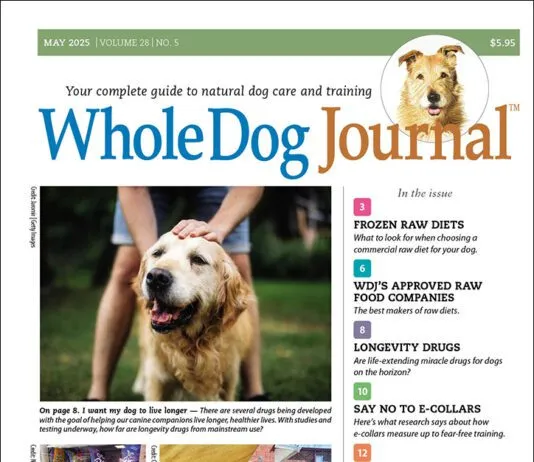Download the Full August 2018 Issue PDF
- Urinary Tract Infections
- Good Petiquette
- The Meat Of the Matter
- Trail Runner System
- I Can't Eat Another Bite!
- Food In The Fridge
- Cloudy With A Chance Of Blindness
Download the Full July 2018 Issue PDF
- Not Bad Dog Breath
- The Allure Of The Lure
- Canine Influenza
- Housetraining 101
- Dogs and Carbohydrates
- Mixed Results
Download the Full June 2018 Issue PDF
- Leaving For Good
- Emergency Preparedness
- Next-Step Diagnostics
- Infamous Foxtails
- Wounded In Action
- Considering Board & Train
- Being There
Download the Full May 2018 Issue PDF
- Senior Exams
- Wait and Stay
- Better Safe Than Sorry
- Puppy Social Studies
- When Nails Are Not Tough
- Smelly Dog?
- Home Alone
Download the Full April 2018 Issue PDF
- Freeze-Dried Diets
- Shaping The Perfect Sit
- Paw Cuts and Scrapes
- The Mudbuster
- The Doctor Order Calm
- Marvelous Mutts
- Pet Loss and Grief
- Seeing a Spot?
Download the Full March 2018 Issue PDF
- Rest Insured
- Clicker Training 101
- Seriously, Tick: Off
- Kidding Around
- Excitable Boy
- Smells Like Teen Spirit
- Allergic to Dogs?
Download the Full February 2018 Issue PDF
- Time For a Tough Subject: Food Quality and Price
- WDJ's 2018 Approved Dry Food
- You Can Manage
- A Beter Biome
- How Can You Know What Your Dog Feels?
Download the Full January 2018 Issue PDF
- Pros & Cons of Dog Parks
- Digestibility Matters
- A Step Up For Senior Dogs
- Second That Emotion?
- 2018 Gear Of The Year
Download the Full December 2017 Issue PDF
The problem is, many dog owners have little understanding of animal behavior or training, poor animal behavior-observation skills, and bad timing. When you put a tool that works by causing pain in their hands, the result is often poor. Those who consistently hurt sensitive dogs or inadvertently punish dogs when they are doing the right thing are likely to produce dogs who resent and/or fear their handlers and/or walking on leash.
Download the Full November 2017 Issue PDF
It's great for our dogs that there are so many good foods on the market today. But the wide range of options makes the task of selecting foods a bit more challenging. It may be a nice problem to have, but for owners who don't know where to start, it is a problem!
Download the Full October 2017 Issue PDF
From the first issue, one of WDJ's missions has been to bring you "in-depth information about effective holistic healthcare methods." However, the word "holistic" is subjective, and it's frequently used to mean very different things.
Download the Full September 2017 Issue PDF
Foxtails, the bane of a California dog's existence, prompted Woody's first, second, and third trips to the vet this year. His insurance hasn't quite paid for itself so far, but if he has just one more veterinary visit for an injury or illness this year, it likely will be a draw.





















